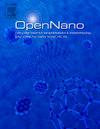透皮给药系统:创新策略、应用和监管观点的综合综述
Q2 Pharmacology, Toxicology and Pharmaceutics
引用次数: 0
摘要
透皮给药系统(TDDS)是一种非常成功和合适的给药方法,因为它比其他给药系统有很多优点。该技术的主要优点包括持续释放,绕过第一关代谢,提高患者依从性。然而,皮肤是由多层组成的,药物必须通过这些层才能进入体循环以发挥治疗作用,其局限性包括皮肤渗透性差。有效的TDDS必须考虑药物特性(分子量、溶解度和亲脂性)、载体成分和皮肤特性(水合作用、温度和区域渗透性)来克服这些限制。化学渗透促进剂干扰角质层的脂质基质,而天然渗透促进剂,包括精油和萜烯,提供了其他替代品。近年来,用于递送多种活性成分的多储存器贴片和用于药物自动释放的电子TDDS贴片被开发出来。尽管取得了这些进步,但挑战仍然存在,如皮肤刺激、需要特殊设备以及大分子的输送需要额外的研究。未来的研究必须致力于开发低致敏性粘接剂,优化微针的安全性,研究新的纳米载体,以提高TDDSs的疗效和患者的预后。本文探讨了通过TDDS提高药物渗透的各种策略,并根据USFDA和EMA的指导方针描述了它们的监管要求以及它们的比较,重点介绍了透皮给药系统在医学、专利和临床试验中的各种应用。本文章由计算机程序翻译,如有差异,请以英文原文为准。

Transdermal drug delivery system: A comprehensive review of innovative strategies, applications, and regulatory perspectives
The transdermal drug delivery system (TDDS) is a very successful and suitable approach for drug delivery because of its advantages over other drug delivery systems. The main advantages of this technique include sustained release, bypassing first-pass metabolism, and enhancing patient compliance. However, the skin is composed of several layers through which the drug must pass through to enter the systemic circulation for therapeutic activity and its limitations include poor skin permeability. Effective TDDS must consider drug properties (molecular weight, solubility, and lipophilicity), vehicle composition, and skin characteristics (hydration, temperature, and regional permeability) to overcome these limitations. Chemical permeation enhancers interfere with the lipid matrix of the stratum corneum, and natural permeation enhancers, including essential oils and terpenes, provide other alternatives. Recently, multiple reservoir patches have been developed for the delivery of multiple active ingredients and electronic TDDS patches for automatic drug release. Despite such advancements, challenges persist in the form of skin irritation, the need for special equipment, and the delivery of large molecules requiring additional study. Future research must aim for the development of hypoallergenic adhesives, the optimization of microneedle safety, and the investigation of new nanocarriers to increase the efficacy of TDDSs and patient outcomes. This review explores the various strategies to enhance drug permeation by TDDS and aims to describe their regulatory requirements according to USFDA guidelines and EMA guidelines as well as their comparison, and highlighted various applications of transdermal drug delivery systems in medicine, patents and clinical trials.
求助全文
通过发布文献求助,成功后即可免费获取论文全文。
去求助
来源期刊

OpenNano
Medicine-Pharmacology (medical)
CiteScore
4.10
自引率
0.00%
发文量
63
审稿时长
50 days
期刊介绍:
OpenNano is an internationally peer-reviewed and open access journal publishing high-quality review articles and original research papers on the burgeoning area of nanopharmaceutics and nanosized delivery systems for drugs, genes, and imaging agents. The Journal publishes basic, translational and clinical research as well as methodological papers and aims to bring together chemists, biochemists, cell biologists, material scientists, pharmaceutical scientists, pharmacologists, clinicians and all others working in this exciting and challenging area.
 求助内容:
求助内容: 应助结果提醒方式:
应助结果提醒方式:


